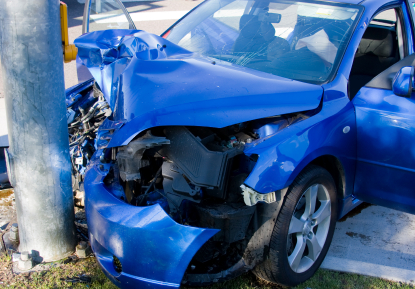Accident Forgiveness: Is It Worth It?
How insurance companies rate accidents, how an optional accident forgiveness option can stop auto insurance rate increases, and how it really works.
No doubt you’ve seen the commercials by now. The announcer strolling through a quiet, idyllic suburban scene, telling you how you can protect you and your loved ones with optional accident forgiveness on your car insurance coverage. In other words, if you get in a wreck the insurance company promises not to raise your rates. Sounds like a good deal, doesn’t it?
Well, it can be. However, it’s important to know exactly what “accident forgiveness” entails.
How Accidents Factor in Insurance Rates
The philosophy behind charging people who get in accidents more than people who don’t is pretty simple: those who use insurance benefits more should pay more than those who use them less.
That said, not all auto insurance claims result in higher rates. Those that do tend to fall in one of two categories: liability claims resulting from accidents when you’re found at fault, and full coverage collision claims. What’s more, the latter is usually only subject to rate increases if the claim exceeds a certain dollar amount. That exact amount varies from company to company, but is usually in the neighborhood of $750 to $1,000.
Accident claims stay on your record for three to five years, again depending on the company. Multiple claims in that three- to five-year period may result in you being dropped, forcing you to go to a non-standard or “high risk” company.
How Accident Forgiveness REALLY Works
Accident forgiveness simply means that if you’re in an accident that would otherwise raise your rates, the insurance company instead will keep your rates where they are. Here’s the rub, though. Accident forgiveness is an optional feature, and therefore comes at an additional charge. In other words, in many respects it’s easy for the insurance company to keep your rates where they are after an accident … because you allowed them to raise your rates beforehand.
A lot of it is truly in the marketing. With accident forgiveness or without it, the company’s loss exposure remains covered. It’s all motivated by the bottom line, not by altruism.
Accident forgiveness typically applies to only one accident. If you’re in a second accident – particularly if it occurs in the same policy period as the first – you’ll most likely get uprated (premium increase) anyway. You also may still be subject to being dropped for multiple accidents in the same way you would be without the accident forgiveness option. Consult with your insurance agent for details specific to your company, assuming your company offers an accident forgiveness option in the first place (not all do).
Is Accident Forgiveness Right For You?
One could make the argument that those who take the accident forgiveness are assuming they’ll be in an accident in the next three to five years. Indeed, many may scoff at such a sentiment. For people who do, optional accident forgiveness is probably not a good fit for them. However, if you find the knowledge that your rates won’t go up after an accident comforting, perhaps the peace of mind is worth it. Ultimately it’s a matter of personal preference.
Trackback from your site.

